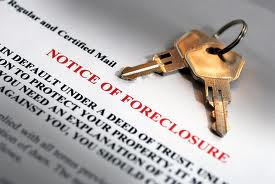
BLOG
Distressed Housing Market Shrinks Dramatically in Last 5 Years
 Distressed housing market shrinks dramatically since housing downturn of Great Recession
Distressed housing market shrinks dramatically since housing downturn of Great Recession
LOS ANGELES (March 10) – Vastly improved home prices over the past five years have changed the landscape of California’s distressed housing market, which is now just a fraction of what it was during the Great Recession, the CALIFORNIA ASSOCIATION OF REALTORS® (C.A.R.) said today.
In January 2009, 69.5 percent of all homes sold in California were distressed, which includes short sales and real estate-owned (REOs) properties. Five years later, that figure has shrunk to 15.6 percent. More specifically, REOs comprised 60 percent of all sales in January 2009, while short sales made up 9.1 percent of all sales but rose to as high as 25.6 percent in January 2012. Short sales currently make up 9.2 percent of all sales.
During the same time period, California’s median home price has soared more than 64 percent from $249,960 in January 2009 to $410,990 in January 2014.
“The dramatic drop in the share of distressed sales throughout the state reflects a market that is fully transitioning from the housing downturn,” said C.A.R. President Kevin Brown. “Significant home price appreciation over the past five years has lifted the market value of many underwater homes, and as a result, many homeowners have gained significant equity in their homes, resulting in fewer short sales and foreclosures.”
The statewide share of equity sales hit a high of 86.4 percent in November 2013 and has been above 80 percent for the past seven months.
In some of the hardest hit California counties, the distressed market in January 2009 was 93.6 percent in Stanislaus County, 93 percent in San Joaquin County, 89.5 percent in San Benito County, 86.1 percent in Kern County, 85.6 percent in Sacramento County, 84.2 percent in Fresno County, and 83.6 percent in Monterey County. The distressed market now has shrunk to 24.8 percent in Stanislaus, 25.1 percent in San Joaquin, 17.5 percent in San Benito, 18.4 percent in Kern, 19.9 percent in Sacramento, 26.3 percent in Fresno, and 16.9 percent in Monterey counties.
Of the reporting counties, San Luis Obispo, Orange, Santa Clara, and San Mateo counties held the lowest share of distressed sales in January 2014 at 10.2 percent, 9.5 percent, 7.7 percent, and 6.8 percent, respectively.
Leading the way...® in California real estate for more than 100 years, the CALIFORNIA ASSOCIATION OF REALTORS® (www.car.org) is one of the largest state trade organizations in the United States with 165,000 members dedicated to the advancement of professionalism in real estate. C.A.R. is headquartered in Los Angeles.
Single-family Distressed Home Sales by Select Counties
| Distressed Sales by County | Jan. 2014 | Jan. 2009 |
| CA | 15.6% | 69.5% |
| El Dorado | 20.1% | 63.0% |
| Fresno | 26.3% | 84.2% |
| Kern | 18.4% | 86.1% |
| Los Angeles | 15.8% | 62.4% |
| Monterey | 16.9% | 83.6% |
| Orange | 9.5% | 60.3% |
| Placer | 15.1% | 68.1% |
| Riverside | 15.6% | 79.4% |
| Sacramento | 19.9% | 85.6% |
| San Benito | 17.5% | 89.5% |
| San Bernardino | 21.7% | 81.9% |
| San Joaquin | 25.1% | 93.0% |
| San Luis Obispo | 10.2% | 52.2% |
| San Mateo | 6.8% | 48.2% |
| Santa Clara | 7.7% | 68.0% |
| Santa Cruz | 11.6% | 56.6% |
| Stanislaus | 24.8% | 93.6% |
| Tulare | 20.0% | 45.8% |
| Yolo | 13.3% | 74.5% |
How to Claim Your Energy Tax Credits
How to Claim Your Energy Tax Credits
By: Donna Fuscaldo
Published: January 30, 2014
Energy tax credits on select improvements available through the end of tax year 2013.
Limits on IRS energy tax credits besides $500 max
- Credit only extends to 10% of the cost (not the 30% of yesteryear), so you have to spend $5,000 to get $500.
- $500 is a lifetime limit. If you pocketed $500 or more in past years combined, you’re not entitled to any more money for energy-efficient improvements in the above categories. But if you took $300 back then, for example, you can get up to $200 now.
- With some systems, your cap is even lower than $500.
- $500 is the max for all qualified improvements combined.
Certain systems capped below $500
No matter how much you spend on some approved items, you’ll never get the $500 credit -- though you could combine some of these:
System
Cap
New windows
$200 max (and no, not per window—overall)
Advanced main air-circulating fan
$50 max
Qualified natural gas, propane, or oil furnace or hot water boiler
$150 max
Approved electric and geothermal heat pumps; central air-conditioning systems; and natural gas, propane, or oil water heaters
$300 max
And not all products are created equal in the feds' eyes. Improvements have to meet IRS energy-efficiency standards to qualify for the tax credit. In the case of boilers and furnaces, they have to meet the 95 AFUE standard. EnergyStar.gov has the details.
Tax credits cover installation — sometimes
Rule of thumb: If installation is either particularly difficult or critical to safe functioning, the credit will cover labor. Otherwise, not. (Yes, you’d have to be pretty handy to install your own windows and roof, but the feds put these squarely in the “not covered” category.)
Installation covered for:
- Biomass stoves
- HVAC
Installation not covered for:
- Insulation
- Roofs
- Windows, doors, and skylights
How to claim the energy tax credit
- Determine if the system you installed is eligible for the credits. Go to Energy Star's websitefor detailed descriptions of what’s covered; then talk to your vendor.
- Save system receipts and manufacturer certifications. You’ll need them if the IRS asks for proof.
- File IRS Form 5695 with the rest of your tax forms.
This article provides general information about tax laws and consequences, but isn’t intended to be relied upon as tax or legal advice applicable to particular transactions or circumstances. Consult a tax professional for such advice, and remember that tax laws may vary by jurisdiction.
Find your next home with me! Text LKHOMES to 87778 or visit http://87778.mobi/LKHOMES for your FREE search.
Laura Key, CalBRELic #0198085
310.866.8422
As Home Prices Rebound, Lenders Rush to Unload REOs
The recovery in home prices this year is prompting banks to sell off their REO inventory at a brisker pace. Sales of bank-owned homes made up 10 percent of residential sales in November, the third consecutive month for increases in REO sales, RealtyTrac reports.
"Lenders are taking advantage of this environment to unload more of their bank-owned inventory and in-foreclosure inventory at the foreclosure auction," says RealtyTrac's Daren Blomquist. "But as the backlog of distressed inventory available dries up in many of the markets with the most efficient foreclosure processes — namely California, Arizona, and Nevada, with Georgia not far behind — overall sales volume is declining and will continue to do so until more nondistressed sellers enter the market."
Rick Sharga, executive vice president at Auction.com, says his company is “seeing more properties sold at trustee sales, and we are seeing more properties that are coming from servicers priced to sell at trustee sales.”
Previously, mortgage servicers would put foreclosed homes up for sale at the full value of the loan, CNBC reports. However, those homes would often land back at the bank as investors sought larger discounts. “Ironically, as prices are rising, servicers are discounting the homes more,” CNBC reports.
Start your home search out RIGHT! Access homes from a direct source! Text LKHOMES to 87778 today or go to http://87778.mobi/LKHOMES Available on iPad/Tablet/Smartphones
Source: “Sales of bank-owned homes surge,” CNBC (Dec. 20, 2013)
FHA Limits for Los Angeles Area
Homeownership is not out of reach. FHA limits in California are one of the highest in the country. I have great lenders that can help you reach your real estate goals! Call me to get started on your homeownership goals!!! Laura Key 310.866.8422
Here are the current limits for Los Angeles (as of August 23, 2013) FHA allows 3.5% downpayment over a 15 to 30 year term!
Single Family $729,750
Duplex $934,200
Tri-Plex $1,129,250
Four-Plex $1,403,400
Source: FHA.com
Feds Sue BofA over 2008 Bonds Backed by Prime Jumbo Mortgages
The federal government is accusing Bank of America Corp.of securities fraud, saying the second-largest U.S. lender lied to investors about flaws in supposedly prime loans, including some resembling subprime "liar loans," when it sold $850 million in mortgage bonds in 2008.
Lawsuits filed by the U.S. Justice Department and Securities and Exchange Commission are the latest in a long string of government and private mortgage-related civil actions targeting banks. BofA has drawn a disproportionate number because of the liability it shouldered in 2008 when it acquired the enormous subprime lender Countrywide Financial Corp. of Calabasas.
The new DOJ and SEC suits, filed Tuesday, are the first such government suits not to involve Countrywide, instead accusing BofA itself of wrongdoing. In another unusual twist, they focus on jumbo mortgages -- the outsized home loans designed for wealthy borrowers.
The SEC said losses so far to investors in the mortgage-backed securities have totaled about $70 million and may eventually reach as high as $120 million. The investors included the Federal Home Loan Bank of San Francisco andWachovia Bank, the East Coast giant that nearly failed and now is part of Wells Fargo & Co.
A BofA statement blamed the housing market collapse for defaults in the pool of loans backing the bonds, and said they performed better than similar bundled loans from that era. The bank maintained that it would show the bonds were bought by "sophisticated investors who had ample access to the underlying data" -- but presumably didn't bother investigating.
The DOJ said BofA made most of the loans through mortgage brokers, not telling the investors that it had learned at the time that these loans were defaulting at a high rate. BofA no longer makes mortgages through third-party channels.
Despite the affluent clientele, about 15% of the mortgages resembled the subprime "liar loans" that led to so many defaults, the DOJ suit said. These "Paper Saver" loans were made to self-employed borrowers without bank verification of their income or assets, it said, accusing BofA of not disclosing the percentage of the loans made in this high-risk manner.
"As Defendants knew, mortgages given to self-employed borrowers were more risky than mortgages given to salaried borrowers and stated income/stated assets mortgages given to self-employed borrowers were even riskier," the lawsuit said.
The DOJ lawsuit alleged violations of a 1989 law that allows the government to seek hefty civil penalties. It says that in addition to other problems, BofA violated its own underwriting standards in issuing the loans and did not perform a due-diligence investigation at the loan level when it securitized them.
Source: LATimes By E. Scott Reckard August 6, 2013, 4:45 p.m.
Where Asking Prices Are Rising the Most
California is rising fast, yet it's not at the highest it's ever been. Interested in buying or selling! Let me assist you in reaching your real estate goals! Laura Key 310.866.8422
Median list prices in May edged up 2.10 percent month-over-month, as housing inventories also were on the rise, creating a greater balance between supply and demand, according to realtor.com’s latest Real Estate Health Report.
The nationwide median list price was $199,000 for May, and up 4.79 percent year-over-year.
"We are seeing large regional markets across the country leading the way to national recovery. These regions are acting as a microcosm for what's slowly happening in the larger real estate market," says Steve Berkowitz, chief executive officer of Move. "Overall, we're seeing seller confidence beginning to respond to consumer demand. Nationally, there are more homes going on the market for a shorter amount of time. And this is happening in our hot markets on a much larger scale."
California housing markets are seeing some of the highest median price gains. The following 10 markets have seen the highest year-over-year list price gains:
1. Sacramento, Calif.: up 42.45%
- Median list price: $284,900
2. Oakland, Calif.: up 38.27%
- Median list price: $495,000
3. Detroit, Mich.: up 31.73%
- Median list price: $125,000
4. San Jose, Calif.: up 30.58%
- Median list price: $679,000
5. Los Angeles-Long Beach, Calif.: up 27.80%
- Median list price: $428,000
6. Fresno, Calif.: up 27.48%
- Median list price: $219,900
7. Phoenix-Mesa, Ariz.: up 27.03%
- Median list price: $235,000
8. Stockton-Lodi, Calif.: up 25.63%
- Median list price: $199,750
9. Reno, Nev.: up 24.23%
- Median list price: $235,900
10. Santa Barbara-Santa Maria-Lompoc, Calif.: up 24%
- Median list price: $775,000
Source: realtor.com®
Search for your next home for FREE! Click below!
Laura Key
Realty Goddess
Laura Key on CBS News
Do you work from home? Buy your next home with your office in mind!
If you work from home, and it is time to move to your next home, there are some factors you should consider carefully before making your decision.
The flexibility afforded by a “zero-commute” combined with the skyrocketing price of gasoline has strengthened the case for full time teleworking and telecommuting. According to an Environmental Protection Agency (2004) study:
“Americans spend an average of 46 hours per year stuck in traffic. Gridlock produces more than $63 billion in congestion costs per year”
The artist community has been well acquainted with the use of work/living spaces for years, but improvements in technology have made the benefits of teleworking and occasional telecommuting more attractive to general consumers. According to the key findings form the International Telework Association & Council (ITAC) Telework America (2000) study:
“Home-based teleworkers also have larger homes, on average, than non-teleworkers; the difference amounting to about 500 square feet. The most popular place for an office in these larger homes is a spare bedroom, with the living room a distant second. The primary home telework activity is computer work (55% of total activities), followed by telephoning, reading, and—averaging 7% of the time—face to face meetings.”
As you purchase your next home, there are certain factors to consider if you need to set up a new home office:
Make sure that your high-tech needs can be met. Have a qualified electrician inspect the wiring of the house to see if the system can handle the extra power load that your home office requires. Older homes may need significant upgrades to handle the extra power, while newer homes are built with more energy-efficient systems to handle the additional power along with heating/air conditioning requirements. If you use cable, DSL or satellite internet access, check with your local service provider to see if access is available in your new neighborhood. Shop around for your telephone provider—in some cases, business service bundles may be more cost effective than regular residential service.
Designate where your office space will be. Determine the amount of space you will need to accommodate your work style and space. In many cases a spare bedroom or living room space can be used, if a formal den option is not available. If your work requires heavy telephone usage or just heads-down concentration, you may want to consider utilizing a room with a door. Doors can be closed to reduce interruptions from other family and household noises.
Plan your office blueprint to include all required furniture, bookcases, computers, fax, and printers. Make sure to allow for filing and storage space for files and extra office supplies. Lighting is critical for computer or assembly work, so make sure to allow for direct sunlight along with any specific task lighting that may be necessary. Select flooring options that will allow you to work comfortably—you may wish to go with hardwood or laminate flooring to allow for your chair to move smoothly across the floor. Install enough phone lines to cover your home, business and fax machines needs.
Is the office easily accessible? If you will expect regular package deliveries, make sure that your designated office is easily accessible to the front door of the home. This is also necessary if you will need to meet clients or visitors in your office and would like to ensure a professional appearance for your business.
Find out about local business requirements. Some cities have zoning restrictions and guidelines for work/living spaces along with tax implications. Make sure to check with your local government to determine if special restrictions exist.
Are you ready to find a home that could allow you to work from home? Or...do you need more room in the current home you own? Give me a call - lets get you started!
Appraised Value: The Ups & Downs Of How Much A House Is Worth
How is the fair market value of a real estate property actually determined?
Determining Fair Market Value is an eternal struggle and major balancing act. That’s because buyers want a house to appraise on the low side—to keep the purchase price down. While sellers want the same house to appraise on the high side—to make the sale price higher. And then you’ve got the owners of the house—who also want the appraisal to be on the low side, in order to keep the property taxes down.
So with all these different agendas and points of view, how is the fair market value of a real estate property actually determined?
Once a year, your county sends all area homeowners official notices that put a dollar value on their property. And property taxes are based on those dollar values. But before those notices get sent out, a long, detailed process usually takes place. First, the land is valued as if it’s vacant—an empty lot, in other words. Then any improvements are described and measured. Improvements consist of the house and any other structures, pools, sheds, garages, and so forth. Next, most counties check the Marshall Valuation Service Cost Guide. It’s a standardized nationwide guide for determining the value of the cost per square foot to build a building that fits the description of the improved property. Next, if the house isn’t brand new, the replacement cost is considered, as well as depreciation; the year the house was constructed and the condition of the property are factors here. Appraisers then must take the critical step of comparing the value of the house with recent selling prices of similar homes in the neighborhood. At this point, the appraisal might stand “as is”—or it might be adjusted upward or downward.
Market Value is a theory, in other words—not an unchanging fact.
In a perfect world, you have to have willing buyer and a willing seller. Neither is under duress. Both are in a position to maximize gain and are trying to do this. But in the real world, things are rarely that simple and equally balanced. Which is why people feel differently about the appraisal value of a house. It really depends how strong their position is as a buyer or seller.
Does the local economy come into it at all? You bet it does.
Ask a successful Realtor about that! He or she will tell you they’ve noticed that the Rio Grande Valley’s fast-growing economy is attracting people from other areas who consider real estate here a bargain. That helps fuel increases in property values.
So—now you know where that Grand Total comes from.
You’re armed with the information you need to make a better house-buying decision. For instance, you can understand how two virtually identical houses that are in two different neighborhoods could be very far apart in price and appraised value. And why your choice of the right house in the right neighborhood could be worth a not-so-small fortune to you right now—and years down the road.
Sellers! You can get a great idea of how much your home is worth! Call me for a FREE Comparative Market Analysis (CMA) Laura Key 310.866.8422
5 Things You Should Know Before You Flip A Property
Money is made at the buy, not the sell of your flip. When flipping a house your money is made at the purchase not at the sell of the house. So, many times people buy a house with the intentions of making a huge profit only to find out that they could not make any money after all the renovations because the purchased price of the house was to high.
1. Money is made at the buy, not the sell of your flip. When flipping a house your money is made at the purchase not at the sell of the house. So, many times people buy a house with the intentions of making a huge profit only to find out that they could not make any money after all the renovations because the purchased price of the house was to high. When you purchase your property you need to be sure that you buy the house with enough money to make renovations, have carrying cost, and add about 5 $6,000. Now, cost is at $147,000, and that is if everything goes as planned. Profit is under 10,000 dollars. The mistake was made at the purchase at the home, not the sell.
2. Get an inspection on the home - Get a complete inspection done on your property. By, spending a few hundred dollars on this expense you can save thousands in problems that you cannot see. Foundation, Pest, Wood Rot, Etc... By, getting a full inspection you can rest assured that you know every thing that is wrong with the property before its to late. In the contact for the house you need to make sure that you have 7 days to have a inspection preformed, and if the inspection finds problems that are going to cost more money that you are willing to spend you can get out of the contract with no penalties.
3. Don't do the work yourself: - Get a contractor or several sub-contractors and have the work done quickly. You need to have you house flipped ASAP, so that you can get it on the market and get it sold. When I started flipping my brother and me did a house together, and we did all the construction. I had a construction background and figured it would save thousands, but it took us over 4 months to get the work done that a contractor could have had the work done in a month. But, we trying to save money on our flip did all the work on our time off and after work, and it just took to long. On our 2'nd flip we used contractors for almost everything and had the house completely flipped with a new roof, new air conditioning, new hardwood, and much more in only 3 weeks. We did not have to spend all our time working on the property and were able to spend that time looking for the next deal. This is how you get rich in real estate.
4. Place the property 1 to 2 percent below market value: If you are wanting to flip real estate and make money the object is to buy and sell the property as quickly as possible, so that you can move on to the next house. If you purchase a house and try to sell it at top dollar to make and extra couple of thousand dollars on your flip, and end up holding it for 6 months you are loosing money. Get the house on the market at a price that is going to blow the competition away, and you will sell it no matter what the market conditions. On our second house the market for selling house went down do to the housing market as a whole, and the tightening of the loans across America. We were told that you could not sell a property in this market, but we went ahead anyway and flipped our house. After 3 weeks on the market we had 3 people wanting to buy the house. Why, because we offered it at such a great deal that people wanted to jump on it. That is what you have to do especially if the market is slow.
5. Use a real estate agent - Do not try to sell you house on your own. Harness the power of a real estate agent and the power of the MLS system. When you do a FSBO you are depending on people driving by your house and seeing you sign, with a real estate agent you have someone actively marketing you house to get it sold. Once again this will free up more time for you to look for more great deals. If you want to help the process I have found that craigslist and listing you house in google adwords help to, but use these tools with the help of a agent such as Laura Key to make sure I have all my bases covered.
I hope this article has been helpful with the basics needs of flipping a house. If you will study and learn you will make money. But, do your homework before you purchase a house, and make sure that you can pull a profit on your deal. Then, make it happen! I am a Investor Friendly Agent, let's get you some deals! Laura Key 310.866.8422
Laura Key on CBS News
Great Burbank HUD Home! 2 Bed 2 Bath
HUD Homes are a wonderful way to purchase your first home! Most are FHA approved and don't need much work at all. Make sure you use a HUD experienced agent as myself! I have helped many families obtain their Home Dreams with HUD! Call me today for more info! Laura Key 310.866.8422
2359 N. Reese Place
Burbank CA 91504
DIY Bucket List
This is a wonderful story about making their house a home! With so many options out there today it's hard to choose what you want in your own home.
More Sellers Jump Into Favorable Market
More sellers are ready to put their homes on the market for the awaiting buyers. They are getting top dollar! If you have been thinking of selling, give me a call for a FREE Comparative Market Analysis and let's begin the process! Laura Key 310.866.8422
Inventories of for-sale homes are increasing as more owners see rising home prices and faster sales as a reason to try to sell now, according to industry reports.
In April, the number of listings was higher than the level of homes that were under contract in that month, according to a study by the real estate brokerage ZipRealty, which measured listings in 24 major metro markets.
“It’s less of an indication of buyer momentum flagging and more of seller momentum picking up, finally,” says Lanny Baker, the company’s chief executive.
The reports find that homes are selling faster—on average, within 32 days of being listed. In April 2012, that average stood at 48 days for homes to sell.
“A market in which the sale prices are happening very close to the list prices, a market in which the list prices seem to be moving sequentially higher, and a market in which any of those houses are selling speedily is one that is bringing sellers back,” Baker says. “That makes it feel to a seller that this isn’t going to be a long passive despair that I tried three years ago.”
Source: “Why More Sellers Could Test the Market,” The Wall Street Journal (June 10, 2013)
Want an estimate of what your California home is worth? Fill out the form below! All info is confidential and will not be sold!
[contact-form][contact-field label='Name' type='name' required='1'/][contact-field label='Email' type='email' required='1'/][contact-field label='Address' type='text' required='1'/][contact-field label='City%26#x002c; State%26#x002c; Zip' type='text' required='1'/][contact-field label='Number of Bedrooms' type='text' required='1'/][contact-field label='Number of Bathrooms' type='text' required='1'/][contact-field label='When are you interesting in putting your home on the market?' type='select' options='0-3 Months,4-6 Months,7-9 Months,10-12 Months'/][contact-field label='Please enter any other important features about your home? Upgrades%26#x002c; Garage%26#x002c; etc.' type='textarea' required='1'/][/contact-form]
California Homebuyers Need Homes!
If you can't see the video from the photo please click here: http://www.cbsnews.com/8301-18563_162-57587256/home-flipping-trend-returns-threatening-higher-prices/
Are you thinking of selling? I have buyers! Call me and let's reach your Real Estate Goal! Laura Key 310.866.8422
4 Big Drivers of the Housing Market Recovery
There seems to be a light at the end of the tunnel and it's getting brighter each day! Let's Get YOU a home! Laura Key 310.866.8422
The Wall Street Journal highlighted four primary reasons why the housing market recovery is strong. They are:
- Sales have made big leaps from year-over-year levels. Existing-home sales are up 9.7 percent compared to one year ago. Sales are at an annual rate of 4.97 million, which is the highest level since November 2009, according to NAR. Despite constrained inventories and recent price gains, home sales continue to post increases.
- Non-distressed home sales are increasing. Home buyers are showing high demand for non-distressed homes. In April, about 18 percent of sales were in foreclosure or a short sale — down from 28 percent year-over-year.
- Inventories have increased. In April, the number of homes for sale rose 11.9 percent from March. The limited supply — mixed with rising buyer demand — has helped home prices to rise around 10 percent year-over-year. “Rising inventory should ultimately slow some of the price rally while boosting sales volumes, helping to restore equilibrium in the housing market,” The Wall Street Journal reports.
- Homes are selling a lot quicker. About half of all homes that were sold in April were on the market for 46 days, down from 83 days one year earlier, according to NAR data.
Search for your next home FREE! Visit me on Facebook and search NOW!
Source: “Four Reasons Why Home Sales Are Looking Healthy,” The Wall Street Journal (May 22, 2013)
Wells Fargo, Citigroup Halt Foreclosure Sales
Banks seem to be moving in the right direction on this action. But is it too late? Call me if you are in need of help! Laura Key 310.866.8422
Wells Fargo and Citigroup have temporarily halted foreclosure sales in several states, taking precautions after a federal regulator released new guidance on minimum standards for foreclosure sales.
The Office of the Comptroller of the Currency (OCC) recently released the new standards. The OCC’s directive mostly consists of 13 questions banks need to ask themselves before selling a home in foreclosure, such as whether the borrower is protected from foreclosure by bankruptcy or if the borrower is in an active loan modification plan.
JPMorgan had also mostly stopped its foreclosure sales after the OCC’s standards were released, but has since resumed sales.
Wells Fargo, the nation’s largest mortgage originator, has seen a dramatic drop in foreclosure sales while significantly decreasing the number of sales it’s processing. For example, foreclosure sales by Wells Fargo in California, Nevada, Arizona, Oregon, and Washington plummeted from 349 a day in April to less than 10 a day, according to Foreclosure Radar, a real estate monitoring firm based in California.
"Wells Fargo has temporarily postponed certain foreclosure sales while we study the revised guidance from the OCC," a Wells Fargo spokeswoman confirmed for American Banker. Citibank officials also confirmed the reason behind their halt in sales was to carefully review the new guidance.
"The OCC did not direct a slowdown or pausing," says OCC spokesman Bryan Hubbard. "However, if servicers are not certain they are meeting these standards, pausing foreclosures is a responsible and productive step."
Are you facing foreclosure? Contact me for a free consultation!
[contact-form subject='Help! Facing Foreclosure!'][contact-field label='Name' type='name' required='1'/][contact-field label='Email' type='email' required='1'/][contact-field label='Phone' type='text'/][contact-field label='Comment' type='textarea' required='1'/][/contact-form]
Source: “Wells, Citi Halt Most Foreclosure Sales as OCC Ratchets Up Scrutiny,” American Banker (May 17, 2013)What to Expect At a Foreclosure Auction
Whether you are an investor that would like to get into buying foreclosed homes for your personal use! Call me today! Laura Key 310.866.8422
Whether you are an investor that would like to get into buying foreclosed homes for your personal use or to flip the property or if you are having your home foreclosed on, you should know what to expect at a foreclosure auction. Of course, the actual steps that will be taken can vary a bit from state to state and from house to house, but it’s good to know what you will be getting into when you go to a foreclosure auction. Foreclosure auctions can be exciting, even fun, but knowing what to expect will help you make the most of the experience, whether you are an investor or a homeowner that is trying to get your house back.
Before the Auction
You’ll likely find out about the foreclosure auction in a local newspaper and on the flier may be information to pre-qualify for bidding. This will allow you to put down a deposit so that the auctioneer knows that you are a serious bidder and can fulfill your bid if you are the winning bidder. Being pre-qualified just sort of speeds up the process so that you don’t have to mess around with the deposit on the day of the auction. During this time you should also do some research on the house by looking into any liens that may be against the property, how much the property is worth, how much it has appreciated in the last few years, as well as property values in the area. If the home looks as though it will need some repairs, you should consider this as well when trying to come up with how much you will be willing to pay for the house. Without this research, no amount of knowledge about what goes on at a foreclosure option will help you because you won’t know where to start when it comes to actually making a good bid.
What Happens At the Auction
The auction will typically start with the auctioneer reading legal notices as well as a legal description of the property. The auctioneer will usually then begin taking bids on the property. If the auctioneer has pre-qualified bidders the process is more streamlined, if not, each time a bid is made the auctioneer will then ask for the bidders deposit check, which is typically right around $5,000 for residential auctions. After each bid the auctioneer will attempt to solicit bids for higher amounts. Each auction is different, but the auction increments usually are set by the auctioneer and may be by $100, $500, or $1,000 per bid. The auctioneer will continue to solicit bids by this increment until it is clear that the highest bid has been reached. Then, the auctioneer will announce, “Going once, going twice, three times, sold!” indicating that the auction is over and the property has been sold to the highest bidder.
Once the bidding has ended a foreclosure deed and purchase papers will be drawn up and validated by the new owner or purchaser and the mortgage holder. A grace will likely be given to allow the purchaser to find financing or to come up with the funds to cover the full amount of the bid. This grace period is usually 30 days unless the purchaser and the mortgage holder agree to other terms. After the grace period a closing will take place, so that the new owner can formally take the title to the property.
What Happens, Now?
The purchaser can do what he or she intended to do with the property, whether it is to move into the home or to sell it for full market value. The money paid by the purchaser will be distributed in order of priority, first of which would be taxes. After taxes money will be paid to the mortgage, then the second and third mortgage if applicable. If there is still money after paying these debts, remaining money will be paid to lien holders and creditors. There is a very slim chance that there will be money left over after all of the debts are paid, if this is the case then the monies will be paid to the former home owner.
What about the Original Owner?
The original owner will often be at the auction so that they can bid on their home, and this is legal as long as they have the deposit required. If the owner of the home that has been foreclosed does bid on the home they must remember that the deposit is not refundable and the deposit assumes that they will be able to finance the home within the grace period. Owners must also remember that if they buy the property back old debts may merge and become reinstated such as second and third mortgages that became void when the first mortgage foreclosed on the property unless one has filed bankruptcy and is truly free and clear of these debts. Owners will often drum up the funds to make the deposit so that they can have another 30 days to try to save their home. Owners may or may not be successful in their attempts to save their home at a foreclosure auction.
As you can see, there are a lot of things that go into a foreclosure auction, but none of them are all that difficult to understand, but knowing about them makes the auction more enjoyable. The auction itself is not all that complicated, but it can be very fast paced. At some foreclosure auctions there are a lot of people, at others there are only a few because of the location or just the debts attached to the property, or even the state of the property. If you are serious about the property you should pay close attention when bidding starts so that you are sure that you can get your bid in when you feel it’s time so that you have the best chance of being the top bidder.
Call me for more info! Laura Key 310.866.8422
What is the Difference Between the Note and Deed of Trust
It's important to know the basics of real estate if you are going to own a home! Call me to register for a FREE Homebuyers Course! Laura Key 310.866.8422
A note, usually known as a promissory note, which is a written promise to repay a loan. Whereas, a trust deed is a document used to protect paying back of a loan that is being documented as a lien counter to the borrower's real estate. It is necessary to use a promissory note in order to avoid any breach in future. The various important terms of the loan should be specified in a promissory note including the loan amount, rate of interest (if any), and terms and conditions of repayment. It must be signed by the borrower with date in order to make it a valid document.
A deed of trust is a document that involves three parties generally known as the borrower, lender and a trustee. This document includes all the basic terms of the loan and should be signed by the borrower. It is documented as a lien contrary to the borrower's real estate. It is generally taken as a collateral document that works consecutively with the promissory note. In this document, the real property of the borrower is guaranteed as a lien to the lender. In case, the borrower is not able to pay back the loan amount, the lender may take the borrower's real property by way of the system of foreclosure.
A promissory note is a legal document that laid out all the essential things like how and when the borrower will pay back the money to a lender, the interest rate and the schedule of payment. It contains the undertaking of the borrower to repay the borrowed money within the specified time period. It is the personal obligation of the borrower to repay the money and has no relationship with an y real estate or other property.
Therefore, it can be understood that although, both the Note and Deed of Trust are an agreement for repayment of a loan, the tow are independent elements of a common mortgage loan. A deed offers the lien on the property in order to secure repayment of the loan. And, the note is completely a commitment between the borrower and the lender. The terms of this agreement can be modified at any period of time with the consent of both the parties. The deed of trust appears in the public property records, whereas, the note is completely a private document that never appears in the public records and therefore it is administratively very easy to make any modifications in the note.
*Please note that the information contained herein is for general informational purposes only. If you are currently involved in a real estate transaction, please direct your questions to your real estate professional, title officer or closing officer.
Rising Housing Demand Leads to Homebuilder Lotteries
In California the inventory is extremely low. My buyers see this an an option! I hate that it's come to this! Just a year ago you did not have this issue!
Short sales show up on credit reports as foreclosure, sellers unable to get back in housing market
It is critical that your Real Estate Agent know what to look for in your short sale approval letter! Make sure you work with an experienced short sale agent! Call me today with questions! Laura Key 310.866.8422
More and more short sales are turning up as foreclosures on credit reports. The issue caught the attention of Senator Bill Nelson who this week asked for a federal investigation into why the mortgage industry does not have a separate credit reporting code for short sales.
Like some of his Trinity neighbors, George Albright unloaded his underwater two-story thru a short sale. A short sale damages credit versus a foreclosure that slashes consumer scores.
It's been more than two years since Albright sold his home, and now's he ready to buy again, but can't. It’s showing up as a foreclosure on his credit.
Veteran mortgage broker Pam Marron found it's a scenario repeating itself over and over again. Short sellers discover they can't get back into the housing market because their credit report shows a foreclosure.
Why? The banks and credit bureaus have no special code to report a short sale, according to Marron, who recently traveled to D.C. to educate lawmakers and lobby groups like the Consumer Protection Bureau to do something about the glitch that could affect many.
Experian says the problem is not theirs. In an email, a spokesperson explained. "The short sales and foreclosures are being coded correctly on Experian’s credit reports. Where we have found the discrepancies occurring is in the underwriting process."
Short term, Marron says, short sellers must demand a letter from their lender that states that the property closed is a short sale and any marking of a foreclosure should be deleted.
Source: www.ABCActionNews.com By: Jackie Callaway
Despite Improvement in Loan-Mod Defaults, Report Raises Alarms
Sadly, loan modifications have not been very successful. Have you had your modification denied? Call me - Laura Key 310.866.8422
There are few defenders of the Obama administration’s signature loan-modification initiative, the Home Affordable Modification Program, or HAMP. But a new report released on Wednesday raised an interesting criticism of HAMP—that borrowers aren’t staying current on modified payments even though HAMP has reduced, on average, borrowers’ monthly payments by more than $400.
The report, from the special inspector general for the Troubled Asset Relief Program, or Sigtarp, said there was an “alarming rate” of homeowners who were defaulting after receiving a permanent mortgage modification.
The report says data show that the longer a homeowner remains in HAMP, the more likely he or she is to redefault out of the program. This is true of almost any mortgage-modification program.
But the report raises broader questions about whether mortgage modifications have been worth the costs, and against what yard stick success in any such program should be measured.
There are plenty of faults to find with HAMP. Officials struggled to ensure taxpayer money wasn’t wasted, so they required lots of documentation. That created new headaches: banks rejected borrowers that they said provided incomplete forms, while borrowers routinely complained that banks lost their paperwork. In an interview last year, Shaun Donovan, the housing secretary, said it was a “fair criticism that programs initially were too complicated and had too many restrictions.”
Mortgage servicers were also overwhelmed. During tense meetings at the Treasury Department throughout 2009 and 2010, officials laid into the banks for not staffing up. Executives groused that HAMP rules changed so often that they couldn’t keep up and that new headline-grabbing initiatives were announced before they could be rolled out to be offered to borrowers.
Others said HAMP didn’t do enough to deal with negative equity, which prompted the administration to launch a belated effort two years ago to encourage principal reduction. The Treasury never made it mandatory because they feared it would both be too expensive and that it would lead banks to opt out of HAMP.
Under HAMP, banks received modest incentive payments to reduce borrowers’ monthly payments to around 31% of their current income, often by extending the loan term and dropping the interest rate. Modifications have resulted in an average monthly payment reduction of $545 or $400, depending on which type of modification lenders provide under the program.
So far, around 860,000 borrowers have active HAMP modifications, and around 290,000 have fallen out of the program. The Sigtarp report said it was “alarming” that 46% of a few thousand permanent modifications made in the third quarter of 2009 had redefaulted, as well as 39% of those made in the last quarter of 2009.
But some industry executives have said that, for all its faults, HAMP succeeded in giving the industry a template for a more sustainable loan modification. Before 2009, many modifications didn’t result in lower monthly payments, and mortgage modifications in the post-HAMP world have performed drastically better than those that came before. Around 25% of borrowers who received a modification in 2011 had fallen behind on payments within one year, down from 57% in 2008, according to banking regulators.
Moreover, more recent HAMP modifications are performing significantly better than earlier HAMP “mods,” something that may be owed to an improving economy as much as any program improvements. Around 11% of HAMP modifications made in late 2011 had defaulted after one year, compared with more than 20% for those made when the program launched in mid-2009.
Data also show that HAMP modifications, which typically offer the most generous payment relief, perform better than privately issued modifications.
Among the bigger questions raised by the report: If mortgage modification redefault rates under HAMP are too high, what’s an acceptable level? And can any mortgage modification program hit those targets?
Source: Wall Street Journal














